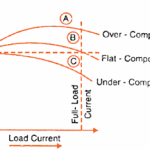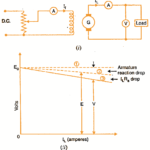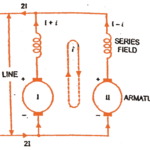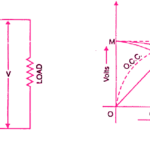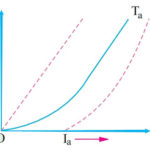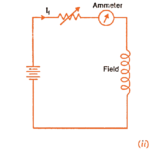In this post, you will learn the characteristics of a series wound dc generator. This article is the continuation of the dc generator characteristics.
The connection diagram of a series-wound generator is shown in the figure below.
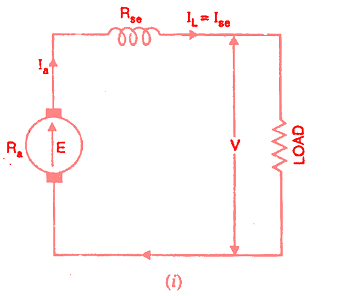
The open circuit, internal and external characteristics of series wound dc generators are discussed here.
Open circuit characteristic
Curve 1 shows the open circuit characteristic (O.C.C.) of a series generator. Curve 2 shows the total or internal characteristics of a series generator. Curve 3 shows the external characteristic of a series generator.
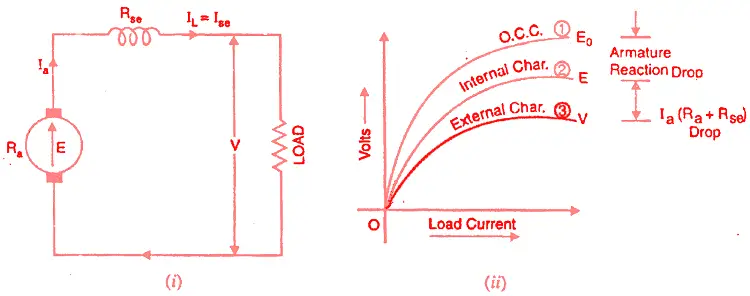
Internal characteristic
Curve 2 shows the total or internal characteristics of a series generator. It gives the relation between the generated e.m.f. E. on load and armature current.
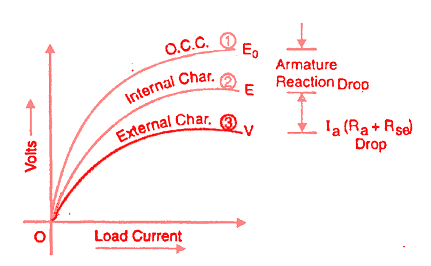
Due to the armature reaction in the dc generator, the flux in the machine will be less than the flux at no load.
Hence, e.m.f. E generated under load conditions will be less than the e.m.f. E0 generated under no-load conditions.
Consequently, the internal characteristic curve lies below the OCC curve; the difference between them representing the effect of armature reaction.
External or Load characteristic
Curve 3 shows the external characteristic of a series generator.
It gives the relation between terminal voltage and load current IL.
Therefore, external characteristic curve will lie below internal characteristic curve by an amount equal to ohmic drop [i.e., Ia(Ra + Rse)] in the machine.
Note:
If it is operated on the drooping portion of the characteristic, it gives approximately constant current irrespective of the external load circuit resistance.
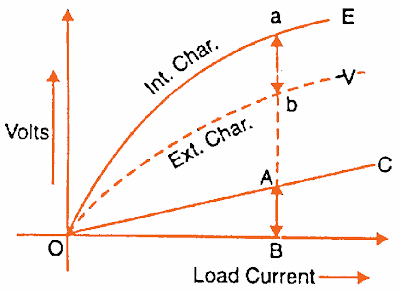.png)
